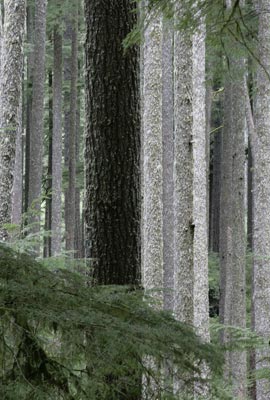
Copyright © Andy Long
Let the light and shadows work together to create a feeling of existence within a forest.
Whenever we go into the field for a session of photography, we have plenty of chances to see what has been created. Living things in nature prove that everything occurs for a reason.
Throughout different parts of the country, wildflowers have various cycles during which they bloom, allowing for bees, hummingbirds and others that depend on them for sustenance to have a full season of pollination and food. The seasons that lead up to wildflower blooms, especially in mountainous areas, need the snows of winter and rains of early spring in order to be abundant. Moderate temperatures are also beneficial. For example, a dry spring with unusually warm temperatures in Crested Butte, Colorado, resulted in a very sparse wildflower season in the area.
Too often we go straight to shooting mode when we encounter a field of wildflowers. Instead, we need to take time to look around and enjoy– soaking in the beauty before we start taking pictures.
The presence of a running stream and a patch of flowers in the mountains is not happenstance. There are reasons why fields of flowers don’t bloom as profusely in a desert. Even the size of the flowers that grow in different areas shows how they are designed to survive in their environments. At extreme altitudes where wind is a constant force, the flowers are quite small and low to the ground so they can make it through their short growing season.
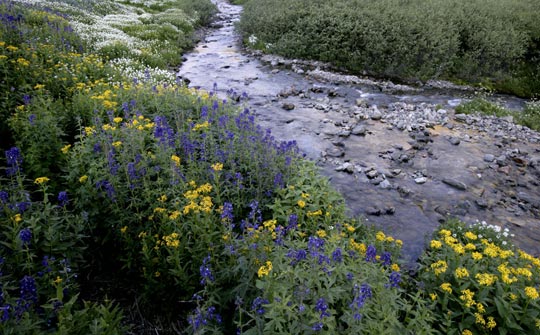
Copyright © Andy Long
A mountain stream and the lush beauty of wildflowers creates a sense of serenity.
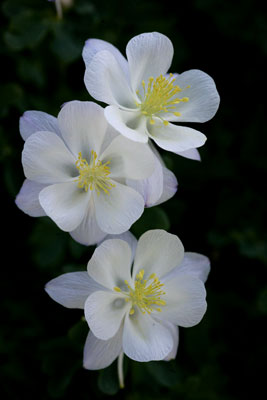
Copyright © Andy Long
If you have macro equipment, it’s possible to move in tight and explore the intricate and amazing details of a wide variety of beautiful flowers. Want to see even more detail? Add extension tubes and a teleconverter to the equation and increase the magnification ration from 1:1 to as much as 4:1 life-size with a long enough tubes and a 2X teleconverter. Note: This requires a very calm day in the field as the more you add, the less depth-of field there is to the image. Depending on the lens and other attachments you use, a starting point for depth-of field would be around f/11. The ISO can be bumped up a good bit with today’s cameras to help provide a faster shutter speed.
The simplicity of a group of Columbines shows off their intricate detail in this macro shot.
One of the most amazing examples of incredible sights that doesn’t occur by accident is the Aurora Borealis. Many factors must come together for the effect to appear. Solar flares have to emit from the sun and find a path straight to earth. As they go around the earth, some must be brought into the atmosphere by the magnetic poles. From here, they mix with certain high altitude gases (between 60 and 150 miles in the sky) to create the incredible colors and activity that occurs for people in the higher latitudes to see.
Being primarily a wildlife photographer, nothing amazes me more or is more enjoyable for me to photograph than the northern lights. “Aurora” was the Roman Goddess of Dawn. “Boreas” is Greek for wind making for the Dawn Wind, a wind that can be seen like none other on earth. No pencil can draw it, no colors can paint it, and no words can describe it in all its magnificence. The Aurora Borealis has fascinated people for centuries.
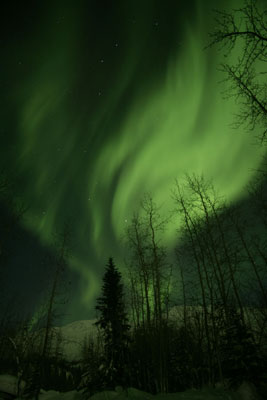
Copyright © Andy Long
Nothing compares to seeing nature’s creation like the northern lights.
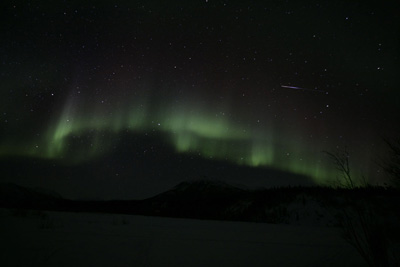
Copyright © Andy Long
A shooting star adds to the wonder of the Aurora Borealis as it makes the sky come alive ( above).
As in the case of wildflowers, very nice fall colors in different parts of the country require specific conditions to work together. The right amount of moisture in the ground and cool temperatures must combine with shorter days to produce the blanket of colors on the hillsides that we love to photograph.
Going into the trees we can discover more evidence of factors working together. Pinecones scattered across the forest floor offer food for the many types of squirrels as well as the beginnings of new trees to replace those that have died and fallen. Even in death, old trees provide life. Many forms of mushrooms and other fungi sprout from them. They also provide nutrients to the ground as they decay.
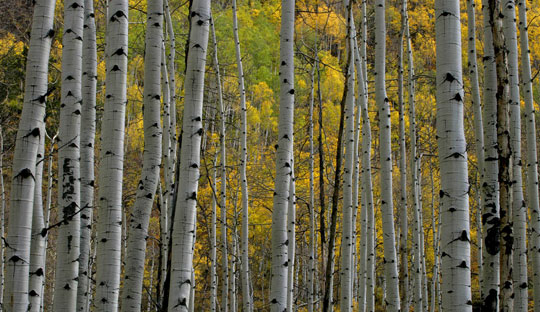
Copyright © Andy Long
Fall offers a whole new feel to forests as they come alive with color, detail and patterns.
For photographers, taking time in a forest encourages us to examine the smaller aspects of larger scenes. Trying to capture a large scene in a single image doesn’t provide a single point of interest and focus for the viewer. An interplay of light, shadows, and detail can result in extraordinary shots. In addition, using line, pattern, and the uniqueness of the setting in fall color images can help bring the viewer to the point that drew your interest as the photographer.
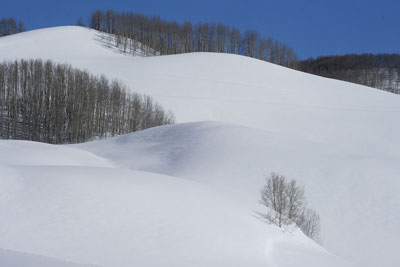
Copyright © Andy Long
The soft white of a snowy hillside and the leafless aspens create a beauty unmatched by other seasons.
Another season that has its own beauty is winter, when a blanket of snow has covered the ground and everything else. There is a stillness that can be felt when you’re alone in a sea of white. Many people like to stay indoors and hide when the temperatures drop, but the wonderful world of creation is opened from a whole new perspective. Animals have an acute instinct as to what the upcoming seasons are going to be like. If a hard and heavy winter is approaching, certain species in an area will move their mating season up in order to finish their annual ritual ahead of the impending weather. Conversely, if a mild winter is coming, they put off mating to feed more before the rut.
Wildlife migrations are another part of nature’s design. Experiments were performed a few years ago in which eggs were taken from the nests of migratory birds. The eggs were hatched and the young raised until it was time for the birds from their original group to begin migration. As if they had done it for years, the young that had been taken long distances from their original nests traveled to the exact migration destination of the rest of the birds. The homing ability of black bears is another example of how animals know where they’re supposed to be. Many that have been captured and taken many miles away have found their way back to the point where they were captured. The record distance a bear has traveled to return to the site of its capture is 142 miles.
The shapes of certain animals might seem very odd until we consider their eating and living habits. Is a giraffe’s neck too long? Not when they have to reach high in the trees to find leaves to eat. Likewise, when we look at birds–especially wading and shore birds, their shapes and bills are well suited for their feeding habits.
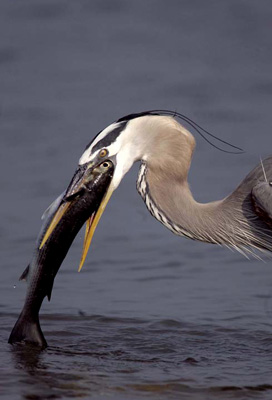
Copyright © Andy Long
Eye to Eye: It can be amazing to see the size of fish some of the waders are able to swallow, such as this Great Blue Heron.
Nature is a symphony of design. How often do we have a feeling of serenity while sitting next to a river or lake, enjoying the beauty of a field of flowers? How can anyone not experience a sense of exhilaration when standing atop a mountain where you feel like you can see forever? With our images, we can share our feelings and perspectives on nature’s designs.
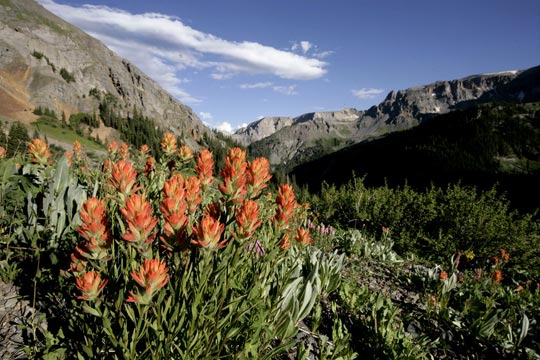
Copyright © Andy Long
When everything comes together, like the beauty of these Indian Paintbrush wildflowers, the slopes and valleys of the mountains and a Colorado blue sky, every photographer should remember to just take some time, sit back and let yourself be absorbed in the moment.
by Andy Long

Leave a Reply